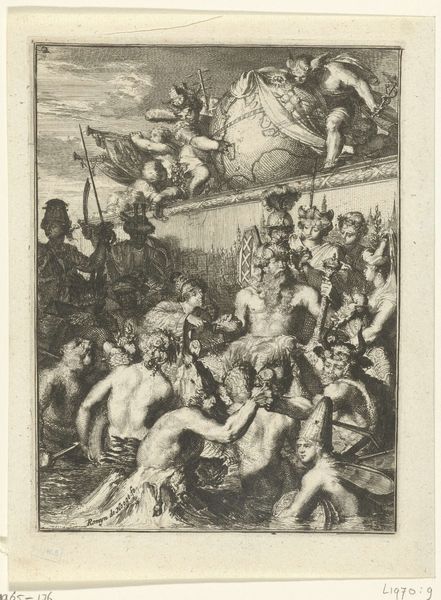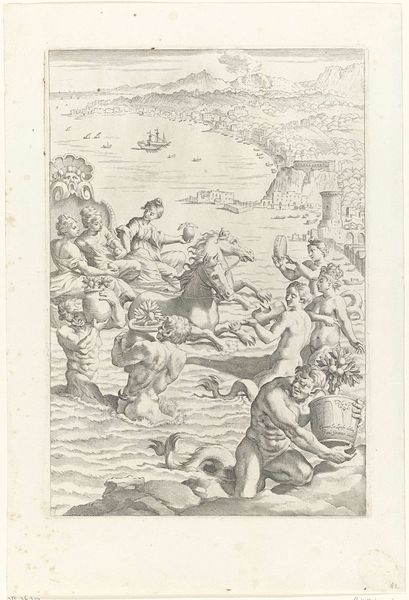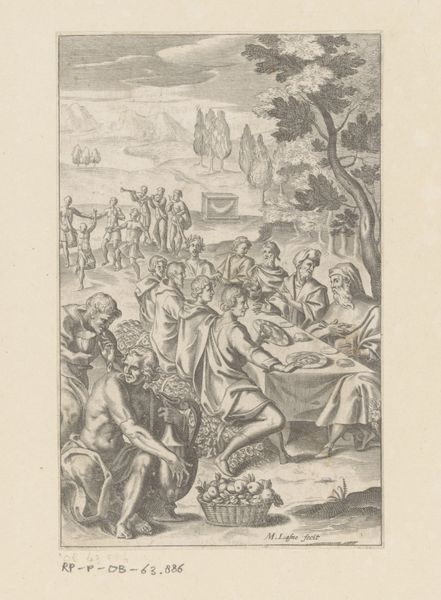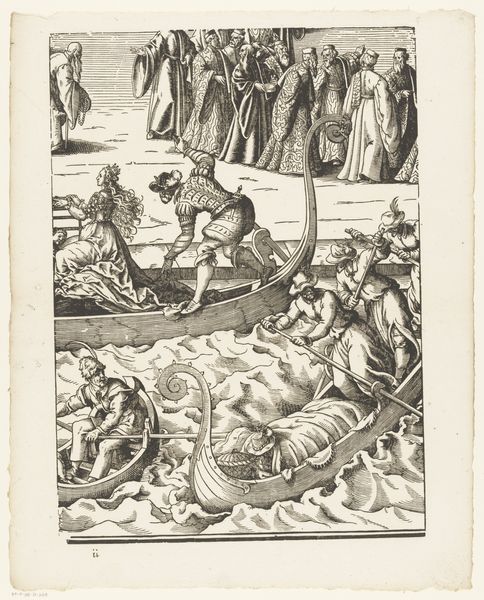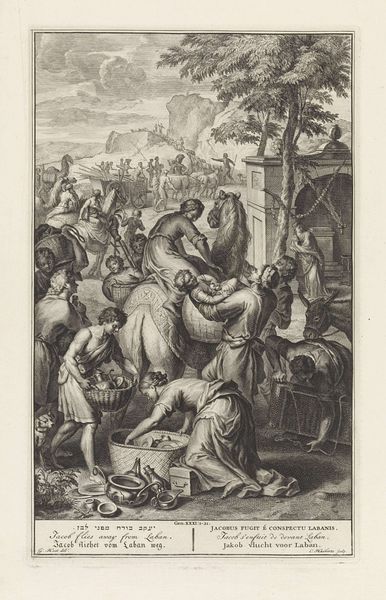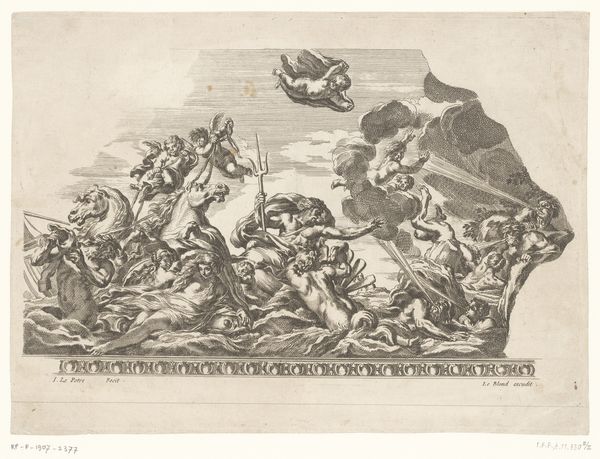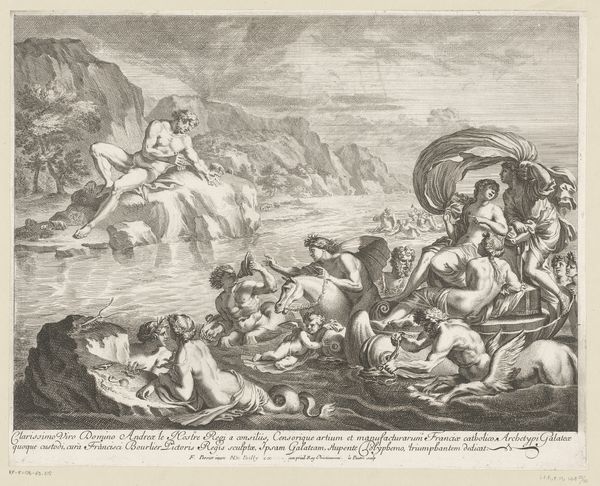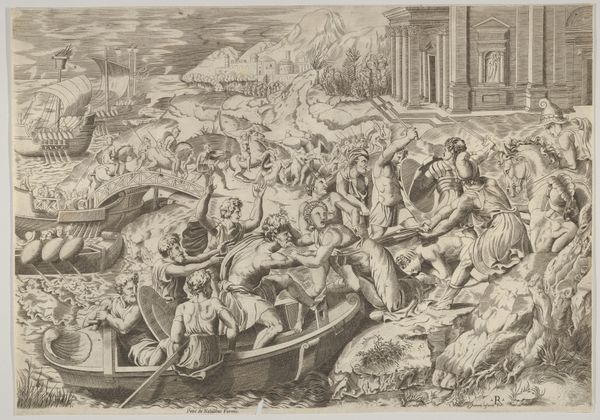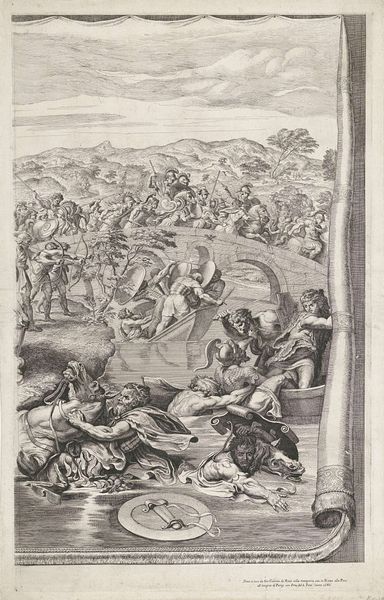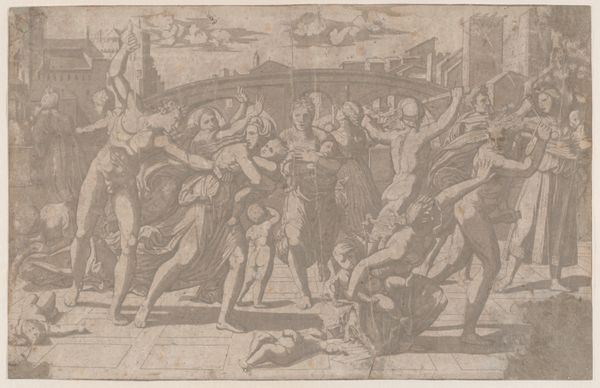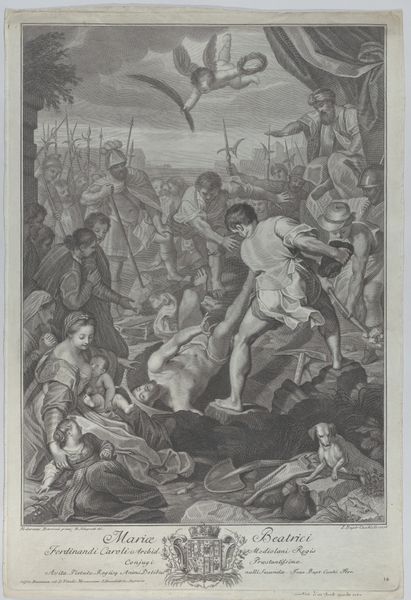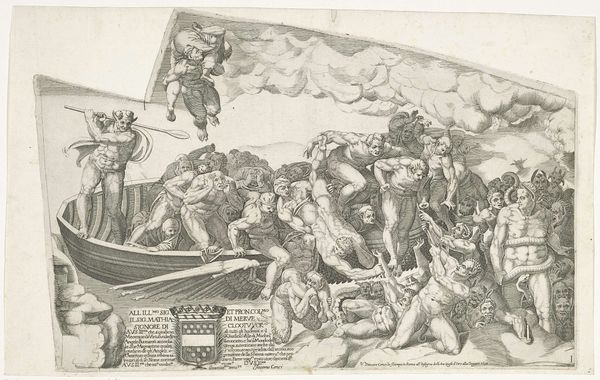
print, etching, engraving
#
baroque
# print
#
pen illustration
#
pen sketch
#
etching
#
figuration
#
line
#
history-painting
#
engraving
Dimensions: height 692 mm, width 444 mm
Copyright: Rijks Museum: Open Domain
Editor: Here we have "Battle of the Milvian Bridge, fourth part," made in 1637 by Pierre Scalberge. It's an engraving. It looks incredibly detailed, and I'm struck by the sheer amount of labour that must have gone into it. What do you make of it? Curator: It’s interesting to consider this image within its printmaking context. Scalberge would have been involved in a complex division of labor, relying on skilled artisans for the physical production of the plate and prints. Look closely – can you discern how the production process informs its meaning? Editor: Well, there’s the obvious reproduction aspect - prints being multiples. Were these prints for a mass audience, then? Curator: Potentially, though we also have to think about the economics. Scalberge would have been part of a system involving patronage, distribution networks, and markets. Who had access to these images, and how would its status as a multiple impact its perceived value? This also highlights an issue about accessibility and distribution – how does making historical events available as prints influence our view of both history and art? Editor: That's fascinating! I hadn't thought about how the printmaking process itself plays a role in shaping the art’s accessibility and even its cultural significance. Thanks! Curator: Precisely. Considering the materials, techniques, and the social structures around its creation opens up new perspectives on art historical subjects like battles and bridges.
Comments
No comments
Be the first to comment and join the conversation on the ultimate creative platform.
